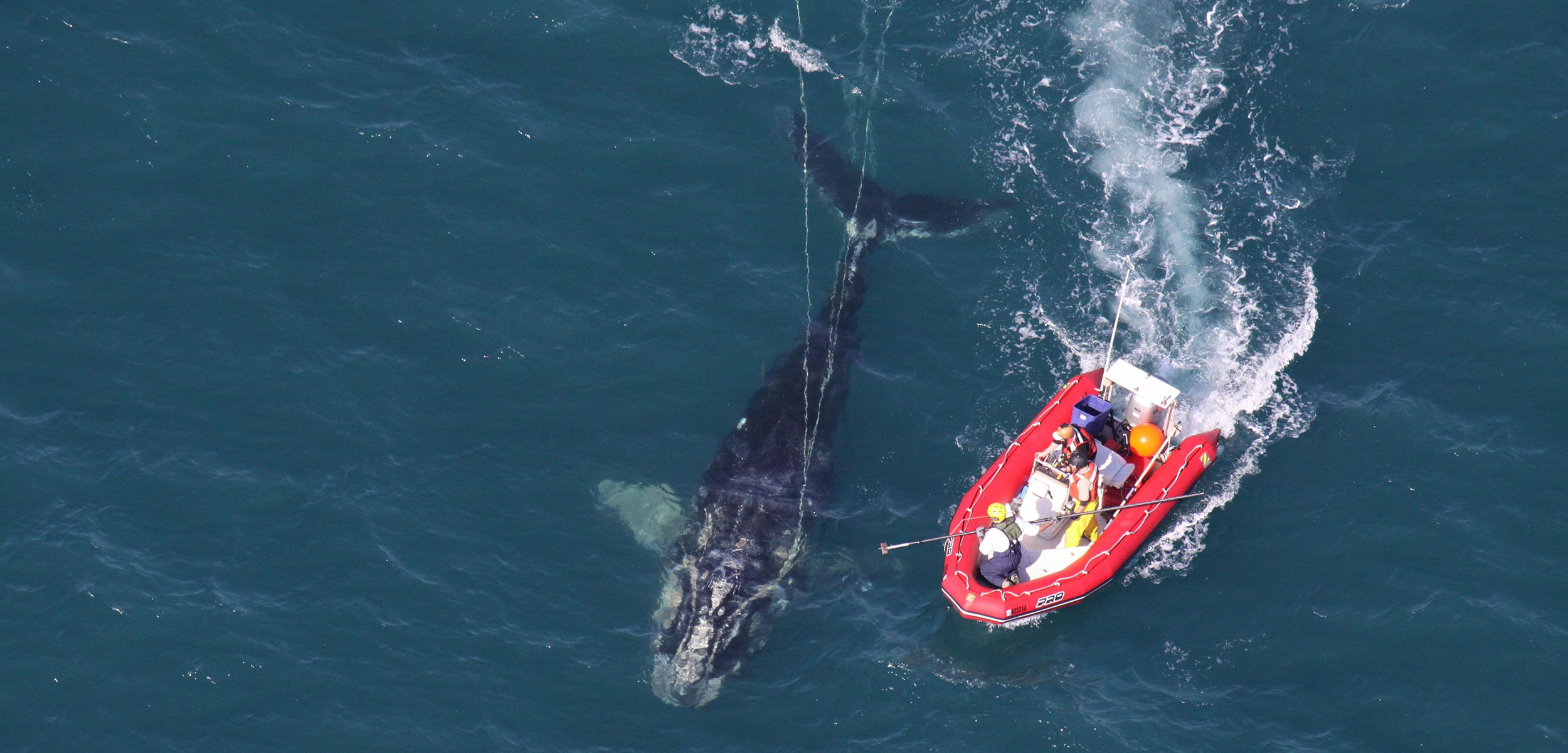Right Whales Are Losing the Right Genes
Losing young is sad, but for small inbred populations it can sometimes be a good thing—in the long run.
Article body copy
If lobster gear and fast-moving ships ever stop killing North Atlantic right whales, the species will still have to navigate around one other key danger on its path to recovery: its own limited gene pool.
Industrial whaling and more modern threats, like ship strikes and entanglements, have reduced the North Atlantic right whale population to just 350 or so individuals. Shrinking populations inevitably become more inbred, leading to a whole host of problems.
The trouble with inbreeding is that closely related parents have many genes in common. These shared genes may include recessive genes, which only get expressed if their child inherits two copies—one from each parent. An animal’s genes will invariably contain a mutation or two, and some of these changes will be harmful. If a population is big enough, these damaged genes mostly float around in the background as recessive genes that don’t frequently cause harm. But in an inbred population, where mutated genes have a greater chance of meeting a copy of themselves, they can wreak havoc.
In less damaging cases, inbreeding can lead to consequences like the infamous Habsburg jaw—the distinctive distortion found in the heavily inbred European royal family. At its worst, inbreeding can cause health problems, infertility, and the propagation of deadly genetic disorders. If enough harmful mutations build up in a population, that will result in a condition known as inbreeding depression.
But inbreeding doesn’t always mean a slow slide into genetic degradation. Even in very small populations, natural selection has a way of cleaning up a species’ genome. It’s called genetic purging, and according to new research led by Timothy Frasier, a biologist at Saint Mary’s University in Nova Scotia, the struggling North Atlantic right whale population seems to be ditching some of its detrimental genes.
Over time, researchers have used crossbows with special arrows to collect skin samples from 80 percent of all North Atlantic right whales and isolate the genetic material. In work that has yet to be peer-reviewed, Frasier and his collaborators analyze the genes of 100 females from that data set. They find that while these adults are mostly healthy, many carry harmful recessive mutations. If one of these females mates with a male that provides a matching harmful recessive gene, their calf will be unviable and promptly die.
“In the short term, this is a bad thing because we’re losing calves,” Frasier says. But dead calves can’t reproduce, so in the long run genetic purging takes the harmful genes out of circulation. “It means that the calves that do survive have more genetic diversity than you’d expect,” given the small size of the population, he says. And those survivors grow up to produce healthier calves of their own.
Jacqueline Robinson, an evolutionary geneticist at the University of California, San Francisco, says genetic purging can help populations persist even with extremely low numbers. In a 2022 study, Robinson shows that the same process means that the vaquita, a porpoise found only in the Gulf of California, is not doomed to go extinct—even though there are only 10 left in the world. Some species, like the Mauritius kestrel, have managed to recover from just a single breeding pair, she says.
Recovery is more likely, Robinson says, if a species has survived with low numbers for a long time, as the vaquita has. “It enables this gradual purging of the most severely deleterious mutations,” she says. In a rapidly shrinking population, on the other hand, harmful mutations will crop up faster than genetic purging can remove them.
Different killer whale populations offer strong examples of both situations, says Andrew Foote, an evolutionary ecologist at the University of Oslo in Norway.
Several high-latitude killer whale populations in the Atlantic and Pacific Oceans have low genetic diversity. Killer whales colonized these areas about 12,000 years ago after the last glacial maximum, says Foote. As the ice receded, small groups of killer whales moved in, taking advantage of the new habitat. From these small initial populations the killer whales have thrived. According to a study Foote is preparing for publication, there are signs that genetic purging is keeping these killer whale genomes relatively tidy.
In contrast, he says, southern resident killer whales, which live in the northeast Pacific, are suffering from inbreeding depression. This population is dwindling quickly, with only about 75 individuals left.
Where exactly the North Atlantic right whale fits on this spectrum isn’t entirely clear. Yet Frasier’s initial work suggests genetic purging is at play, so the whales may still have a chance—if we give it to them.

